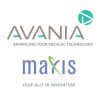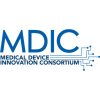For over 40 years, MBK Tape Solutions has helped customers design and manufacture high quality, pressure-sensitive adhesive tapes and related products. Medical Device Summit‘s Sangita Viswanathan speaks to Jeff Kaminski, President and Jason Zajac, Vice President of Sales, on what has changed in terms of product design and development and the regulatory landscape, and how third party converters are managing these trends.
Medical Device Summit: One of the biggest challenges facing device developers and manufacturers is accelerating device development. How do you address this?
Jeff Kaminski: Quantifying the project accurately is important. When we embark on a new project, whether it be from trade shows or referrals from our suppliers, we ask the client to consider the full scope of the project, and what they want to achieve with it. For instance, if they are doing a wound care dressing, what is unique about their product, what are they doing differently than what’s already in the market. This helps define the purpose of the device, and what it’s intended to be used for. Who is using it, the patient, doctor, nurse, etc? Where is it being used, OR, ER, home, etc? These are all very important pieces of information because they help decide how to proceed and how the product may be delivered. You also need to consider aspects of sterilization, what method will be used. How is the project being funded, do we have to meet certain benchmarks for the process to continue. It is important to have great clarity about these different aspects to ensure that we can accelerate device development.
MDS: Given increased FDA oversight, how has the industry changed, especially for 3rd party manufacturers?
Kaminski: In today’s market, there are more people trying to develop products, which mean there’s a greater need for people like us. The overall volume in the medical device arena when it comes to wound care and diagnostics has increased. Monitoring devices is also an area of great growth. One of the bigger challenges for the device makers is to be more precise in your diagnosis, and infection prevention. There’s increasing pressure from not just the regulators, but also from insurance companies, doctors and medical companies to reduce infection and be more accurate.
Zajac: When we get entrepreneurs who are doctors or surgeons, they understand how reimbursement works. The challenge now is to move things out of the doctors’ hands – for instance can a technician handle wound closure – and how to get paid. People are more aware and understand how things need to work for regulators to approve the product and insurers to pay for the product.
MDS: What are the benefits of working with 3rd party converters versus internally doing it?
Kaminski: A lot of the new devices being developed now are being done by start-ups or smaller companies that don’t have all the in-house resources to produce product. They may have the brain power and the vision but not the manufacturing expertise. Even if you are a larger company, with those resources, it can still be faster and more efficient to do with 3rd party convertors like us. For instance, you may be a major device company with equipment in place to manufacture a specific product, but as a third party manufacturer, we are a one-stop-shop; we can run this particular product for one week and then make a completely different product the following week. Larger companies can find it tough to switch gears like that.
Zajac: Third party manufacturers are typically very nimble, and have built a lot of expertise and capabilities over time. For instance, MBK has been in this field for 40 years now and we are able to afford a lot of advancement in machinery, equipment and electronics. We can ensure great precision in materials, equipment and repeatability.
MDS: What kind of unique technology does MBK Tape Solutions have to adapt to changing trends in the medical device industry?
Kaminski: Some of our unique technologies include multi-layer island placement, which is having an adhesive ring and placing another component in the center of that ring. We can do product pre-cut in one roll and ‘marry it’ to a specific spot on another roll. We have the ability to do printed media then register this to a specific product. Combining the trend of miniaturization of electronics, and the need for efficient patient monitoring, we have the ability to use conductive ink in our wearable tapes to enable real-time diagnostics and monitoring.
Zajac: New trends in this area to watch out for are diabetes monitors and insulin injectors that are mounted on the patient’s skin, which can now stay for 5 to 7 days. These would have small RFID chips that sync with your cellphone or insulin delivery device. These new technologies allow the patient to be active, go swimming etc. and still allow for the readings to be captured. MBK Tape Solutions deals with a wide variety of industries and hence is able to cross over learnings from one industry to another, for instance from transportation to electronics, and from construction to medical, Kaminski and Zajac sum up.
For more information, visit MBK Tape Solutions at www.mbktape.com.





